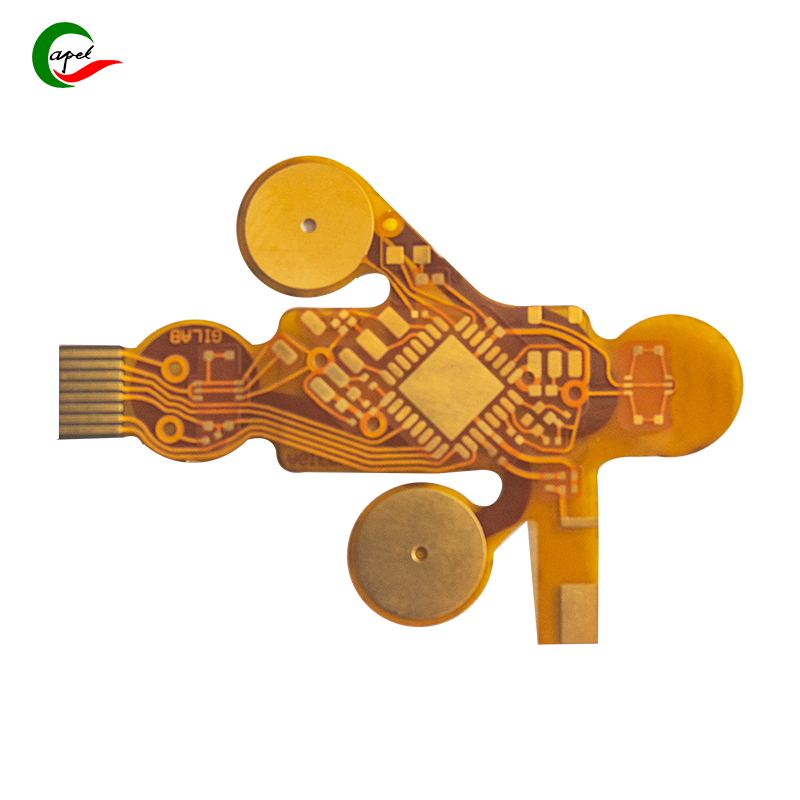Date: 2025-10-18
Industrial environments present significant challenges for flexible PCB reliability. Through our work with chemical processing equipment and automotive manufacturing systems, we've developed effective approaches to prevent chemical degradation in demanding applications.
Material Selection Fundamentals
The foundation of corrosion resistance begins with proper material selection. We've learned that standard polyimide substrates often contain impurities that accelerate chemical degradation. After testing multiple alternatives, we've found that fluorinated polyimide materials demonstrate superior chemical inertness, particularly against industrial solvents and weak acids.
For conductive layers, we've moved away from bare copper in corrosive environments. Our testing shows that tin or nickel-plated copper foils provide effective barrier protection while maintaining good electrical characteristics. The 5μm plating thickness has proven sufficient for most industrial applications without compromising flexibility.
Solder mask selection requires careful consideration. Standard epoxy-based materials tend to swell and degrade when exposed to common industrial chemicals. We've standardized on polyimide-based solder masks that maintain their integrity even under combined thermal and chemical stress.
Protective Coating Strategies
Different operating environments demand specific coating solutions:
For applications involving solvent exposure or acidic conditions, fluoropolymer coatings have demonstrated excellent performance. We apply PTFE or FEP coatings at 20-30μm thickness, ensuring complete coverage without creating excessive stiffness. The curing process requires precise temperature control between 150-180°C to achieve optimal chemical resistance.
In alkaline or high-humidity environments, silicone-based coatings provide better performance. Their inherent flexibility preserves the circuit's bend characteristics while offering good resistance to cleaning chemicals and moisture. Application uniformity is crucial - we use automated spraying equipment to avoid the streaking common with manual brushing.
For general industrial use with mixed chemical exposure, two-component polyurethane coatings offer a balanced solution. These provide reasonable protection against multiple chemical types while remaining cost-effective. The curing process involves an initial room-temperature phase followed by elevated temperature post-curing to enhance adhesion.
Design Considerations for Corrosion Prevention
Physical design significantly impacts corrosion resistance:
Edge sealing has proven critical in preventing chemical ingress. We apply thin silicone sealant layers (5-10μm) to all cut edges, which would otherwise act as wicks for chemical penetration. This simple step has eliminated numerous field failures in our industrial applications.
Component placement requires strategic thinking. We position connectors and vulnerable components on surfaces facing away from expected chemical exposure directions. For particularly harsh environments, we route critical traces on inner layers whenever possible.
Drainage features help manage liquid exposure. We incorporate small channels (0.5mm width) to direct chemicals away from sensitive areas, significantly reducing chemical residence time on critical circuit sections.
Process Control and Validation
Manufacturing processes significantly impact coating effectiveness:
Surface preparation is arguably the most important step. We combine solvent cleaning with mild alkaline solutions to remove all contaminants. The addition of oxygen plasma treatment has improved coating adhesion by approximately 35% in our production experience.
Coating inspection requires careful attention to detail. We use magnification between 50-100x to identify potential defects and employ tape testing to verify adhesion strength. Any detected imperfections require immediate rework to prevent future failures.
Validation testing involves exposing sample circuits to accelerated aging conditions that simulate years of service exposure. We monitor electrical performance and physically examine the circuits for signs of degradation, using these findings to refine our material and process selections.
Implementation Experience
Through numerous projects, we've identified several critical success factors:
Material compatibility must be verified through testing rather than assumed. We've encountered situations where theoretically compatible materials failed in actual service due to unanticipated chemical interactions.
Coating thickness requires careful optimization. While thicker coatings generally provide better protection, they can compromise flexibility and create stress concentration points. We've standardized on thickness ranges that balance these competing requirements.
Edge protection cannot be overlooked. Our field failure analysis consistently shows that unsealed edges represent the most common failure initiation point in corrosive environments.
Process consistency proves essential. We've implemented rigorous process controls and regular equipment maintenance to ensure consistent coating application across production batches.
By implementing these strategies, we've successfully extended flexible PCB service life from initial failure rates within 6-12 months to reliable operation exceeding five years in demanding industrial environments. The approach has proven effective across chemical processing, automotive manufacturing, and heavy industrial applications where chemical exposure would otherwise quickly degrade circuit performance.
related link:
Capel manufacturing PCBs since 2009. Professional technology and high-precision Printed Circuit Boards involved in Medical, IOT, UAV, Aviation, Automotive, Aerospace, Industrial Control, Artificial Intelligence, Consumer Electronics etc..